Platelet-derived exosomes from septic shock patients induce myocardial dysfunction
- PMID: 17996049
- PMCID: PMC2246209
- DOI: 10.1186/cc6176
Platelet-derived exosomes from septic shock patients induce myocardial dysfunction
Abstract
Introduction: Mechanisms underlying inotropic failure in septic shock are incompletely understood. We previously identified the presence of exosomes in the plasma of septic shock patients. These exosomes are released mainly by platelets, produce superoxide, and induce apoptosis in vascular cells by a redox-dependent pathway. We hypothesized that circulating platelet-derived exosomes could contribute to inotropic dysfunction of sepsis.
Methods: We collected blood samples from 55 patients with septic shock and 12 healthy volunteers for exosome separation. Exosomes from septic patients and healthy individuals were investigated concerning their myocardial depressant effect in isolated heart and papillary muscle preparations.
Results: Exosomes from the plasma of septic patients significantly decreased positive and negative derivatives of left ventricular pressure in isolated rabbit hearts or developed tension and its first positive derivative in papillary muscles. Exosomes from healthy individuals decreased these variables non-significantly. In hearts from rabbits previously exposed to endotoxin, septic exosomes decreased positive and negative derivatives of ventricular pressure. This negative inotropic effect was fully reversible upon withdrawal of exosomes. Nitric oxide (NO) production from exosomes derived from septic shock patients was demonstrated by fluorescence. Also, there was an increase in myocardial nitrate content after exposure to septic exosomes.
Conclusion: Circulating platelet-derived exosomes from septic patients induced myocardial dysfunction in isolated heart and papillary muscle preparations, a phenomenon enhanced by previous in vivo exposure to lipopolysaccharide. The generation of NO by septic exosomes and the increased myocardial nitrate content after incubation with exosomes from septic patients suggest an NO-dependent mechanism that may contribute to myocardial dysfunction of sepsis.
Figures
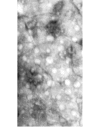
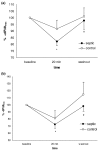
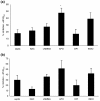
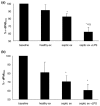
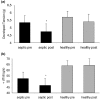
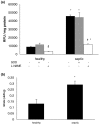
Comment in
-
Are platelets a 'forgotten' source of sepsis-induced myocardial depressing factor(s)?Crit Care. 2008;12(1):110. doi: 10.1186/cc6220. Epub 2008 Jan 23. Crit Care. 2008. PMID: 18254931 Free PMC article.
Similar articles
-
Platelet-derived exosomes promote neutrophil extracellular trap formation during septic shock.Crit Care. 2020 Jun 29;24(1):380. doi: 10.1186/s13054-020-03082-3. Crit Care. 2020. PMID: 32600436 Free PMC article.
-
Platelet-derived exosomes induce endothelial cell apoptosis through peroxynitrite generation: experimental evidence for a novel mechanism of septic vascular dysfunction.Crit Care. 2007;11(5):R107. doi: 10.1186/cc6133. Crit Care. 2007. PMID: 17894858 Free PMC article.
-
Platelet-derived exosomes of septic individuals possess proapoptotic NAD(P)H oxidase activity: A novel vascular redox pathway.Crit Care Med. 2004 Mar;32(3):818-25. doi: 10.1097/01.ccm.0000114829.17746.19. Crit Care Med. 2004. PMID: 15090968
-
Myocardial Depression in Sepsis: Beneficial Adaptation or Sequelae that Requires Treatment?Cardiol Rev. 2020 Sep/Oct;28(5):256-261. doi: 10.1097/CRD.0000000000000301. Cardiol Rev. 2020. PMID: 32032133 Review.
-
Myocardial dysfunction in the patient with sepsis.Curr Opin Crit Care. 2002 Oct;8(5):376-88. doi: 10.1097/00075198-200210000-00003. Curr Opin Crit Care. 2002. PMID: 12357104 Review.
Cited by
-
The history of small extracellular vesicles and their implication in cancer drug resistance.Front Oncol. 2022 Aug 24;12:948843. doi: 10.3389/fonc.2022.948843. eCollection 2022. Front Oncol. 2022. PMID: 36091133 Free PMC article. Review.
-
Exosomes in Cardiovascular Diseases: Pathological Potential of Nano-Messenger.Front Cardiovasc Med. 2021 Nov 12;8:767488. doi: 10.3389/fcvm.2021.767488. eCollection 2021. Front Cardiovasc Med. 2021. PMID: 34869682 Free PMC article. Review.
-
Exosomes as biomarkers and therapy in type 2 diabetes mellitus and associated complications.Front Physiol. 2023 Sep 8;14:1241096. doi: 10.3389/fphys.2023.1241096. eCollection 2023. Front Physiol. 2023. PMID: 37745252 Free PMC article. Review.
-
Exosomes: new molecular targets of diseases.Acta Pharmacol Sin. 2018 Apr;39(4):501-513. doi: 10.1038/aps.2017.162. Epub 2017 Dec 7. Acta Pharmacol Sin. 2018. PMID: 29219950 Free PMC article. Review.
-
Novel Modulators of Asthma and Allergy: Exosomes and MicroRNAs.Front Immunol. 2017 Jul 21;8:826. doi: 10.3389/fimmu.2017.00826. eCollection 2017. Front Immunol. 2017. PMID: 28785260 Free PMC article. Review.
References
-
- Parker MM, Shelhamer JH, Bacharach SL, Green MV, Natanson C, Frederick TM, Damske BA, Parrillo JE. Profound but reversible myocardial depression in patients with septic shock. Ann Intern Med. 1984;100:483–490. - PubMed
-
- Meldrum DR. Tumor necrosis factor in the heart. Am J Physiol. 1998;274:R577–R595. - PubMed
Publication types
MeSH terms
Substances
LinkOut - more resources
Full Text Sources
Medical

